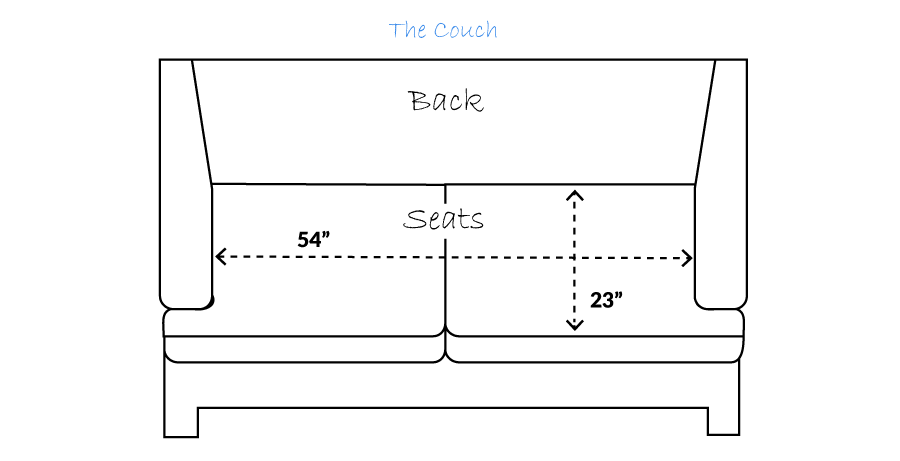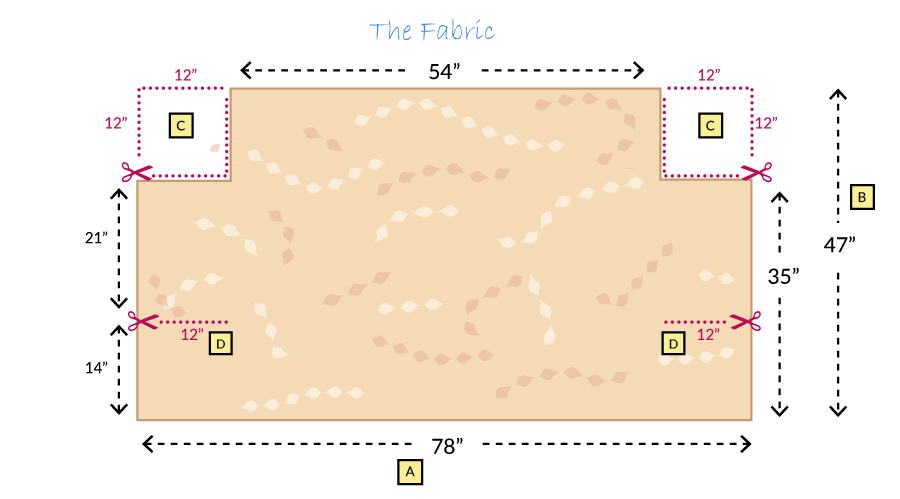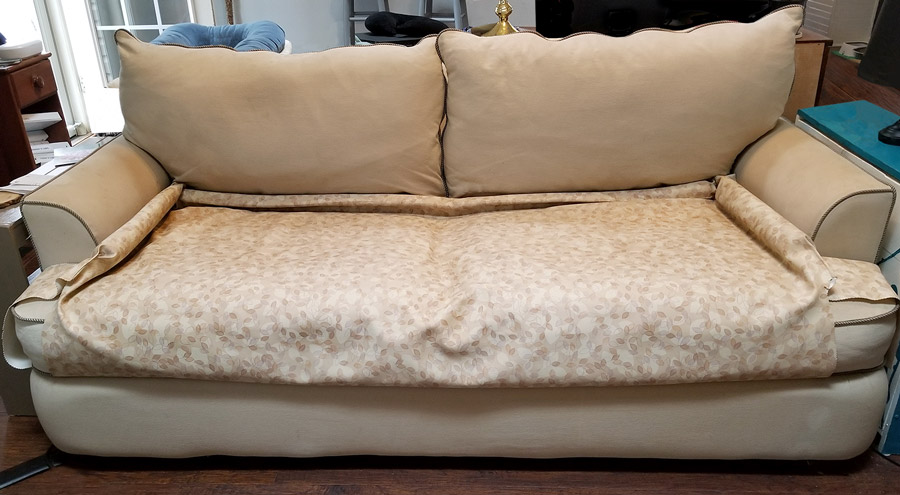What’s a visiting mother to do while stuck at home when her daughter and son-in-law are at work; One can cook, clean and do laundry only so much. I’m watching over her 4 dogs (1 elderly with a weak bladder), and 2 cats that are all seated on a sofa draped with an unappealing flag-like fabric that’s used to catch any ‘accidents’ that may occur while my daughter is out. I began to wonder what could be a more attractive and practical solution to protecting her couch.
My daughter went through various methods to try to protect her couch cushions. First there was the standard dog couch cover that you buy but those are really only to collect hair, not urine and would always get soaked. Then she tried wrapping her cushions’ foam with plastic garbage bags underneath the cushion covers, but she would still have to remove and launder the covers each time there was an accident. Feeling frustrated and out of ideas she pulled a “hail Mary” and just threw sheet-sized waterproof nylon over the entire couch. It was neither attractive nor practical as it would slip off or bunch up.
Luckily, nearby is a wonderful fabric store, Foam and Fabric (located in Fletcher, NC), chock full of upholstery material and various odds and ends. With my creative juices flowing I got to designing a couch cover that was attractive, functional and comfortable to sit on. Keeping in mind the sofa is cream colored, I go off to the store, thinking comfortable, waterproof and stylish… Lo and behold, there before me in a barrel is a 54” wide remnant roll of satin finish, felt backed vinyl with a lovely leaf print in various hues of cream and beige. I scooped up the remaining yards on the roll, bought some thread and headed to my next stop.
Next stop? What else did I need? I didn’t want to reupholster the whole couch, instead I wanted to make something that would be easy to remove, wipe off and would catch any accidents from flowing to the back or sides of the sofa; something to act as a dam or barrier but isn’t obtrusive or uncomfortable. Hmm…. Eureka! Pool noodles.
Pool noodles? Really? You’ll see. Make sure to get the skinnier types of pool noodles. For my project I used 2 but it will depend on the size of your couch. (This method can be adapted to chairs, loveseats, benches)
First things first – you’ll need to measure a couple of things on your couch.
- Measure the length of the seating areas from inside arm to arm (in my case it’s 54”).
- Measure the depth of the seating area from back to front (in our case it’s 23”).
Now we can determine the size of the fabric you’ll need and where to cut.
A Add 24” to the length you measured and that will be the width of your fabric. (54” + 24” = 78”)
B Add 24” to the depth you measured and that will be the length of your fabric. (23” + 24” = 47”).
C Cut 12” squares from both back corners.
Tip: This type of fabric does not need hemming. Use pinking shears for a decorative edge.
D Measure 14” up from the bottom of the fabric. Cut inwards a 12” line from each side.
Important: These lines should be cut just past where the cushions end and the fabric curves down in the front.
If your cushions wrap around the front of the arms like mine, you may need to cut a second 12” line 6 – 8” up from your first lines.

E Subtract 4” from the original length you measured and cut the first noodle down to that size (54” – 4” = 50”). Cut it one more time in the center to make two equal lengths (in my case, each half is 25”).
F Subtract 6” from the original depth that you measured and cut an additional two pool noodles down to that size (23” – 6” = 17”).
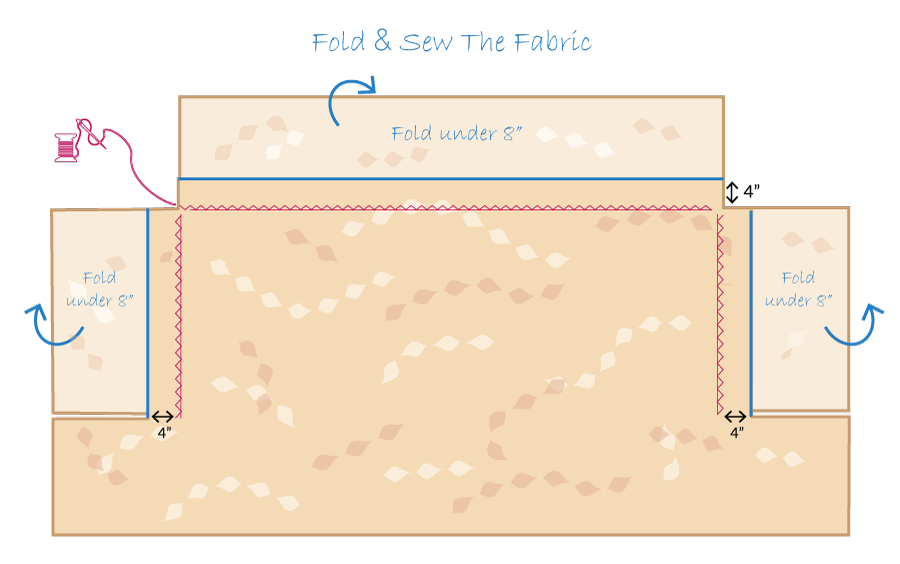
Fold under 8” along the top length of the fabric and sew a 4” seam in from the fold lengthwise. This will create a pocket to later insert one of your pool noodles.
Fold under each 8” side flaps (D) and sew a 4” seam in from the fold vertically. When all sides are open you should have four 8” pocket openings to tuck in your noodles at back and both sides.
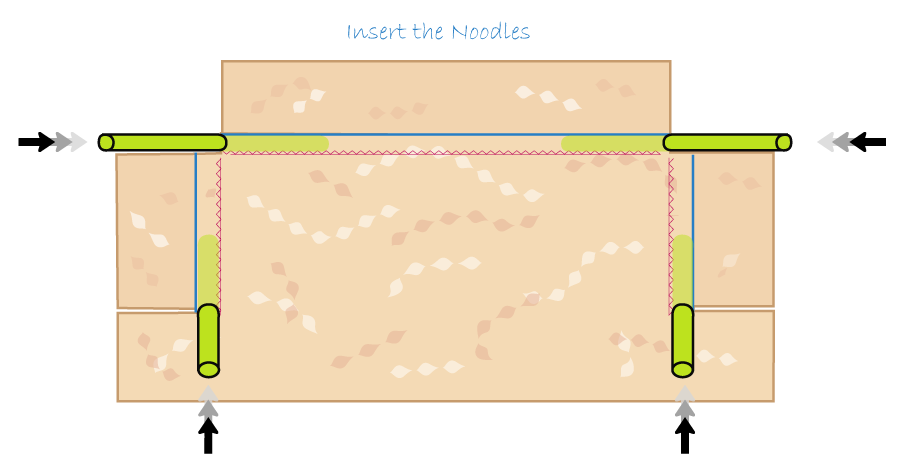
Insert your longer noodles in the pocket across the back using both ends until they meet in the middle. Insert the shorter noodles on the sides from front to back.
Note: To hide the pool noodles, hand stitch together the fabric ends where the side and back noodles meet as well as the front opening of the side noodles.
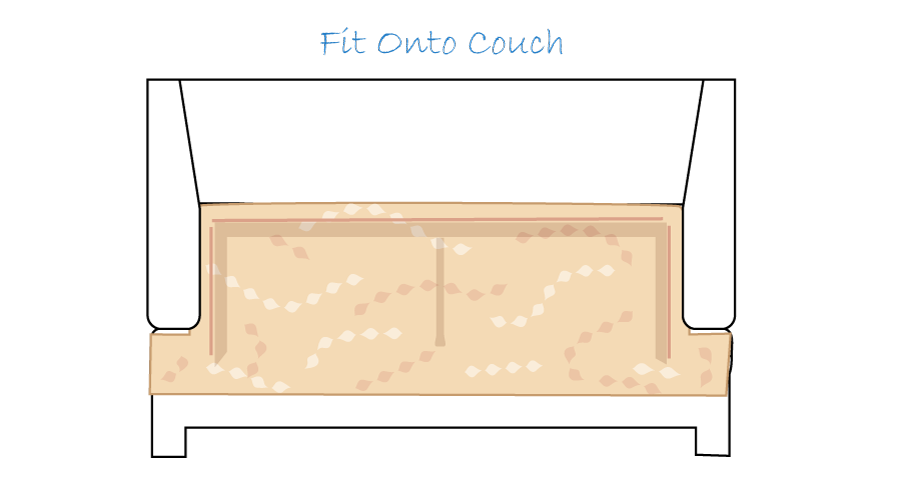
You should end up with a cover with flaps to tuck into the back and sides of the couch to hold it into place. The noodles should border the sides and back border of your seating area. Remember you want the pool noodles to act as a dam. You will also have a fairly long flap that hangs down in front of the couch that you can choose to tuck in under the cushions.
Here’s the final product!
An afterthought: If you want to be a bit more stylish, trim the front flap to reach just past the cushion bottom. Sew elastic an elastic band (length slightly shorter than the seat area) along the edge behind the fabric to create a “fitted” look.
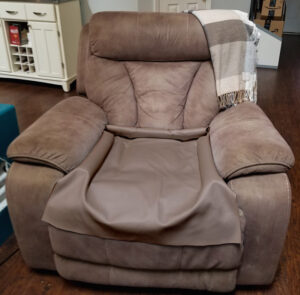 My daughter was so surprised when she got home. She LOVED it and insisted I write a blog about it for her…. I hope you like it as well. A few months later, I was happy to see she had made another smaller cover for her recliner.
My daughter was so surprised when she got home. She LOVED it and insisted I write a blog about it for her…. I hope you like it as well. A few months later, I was happy to see she had made another smaller cover for her recliner.

